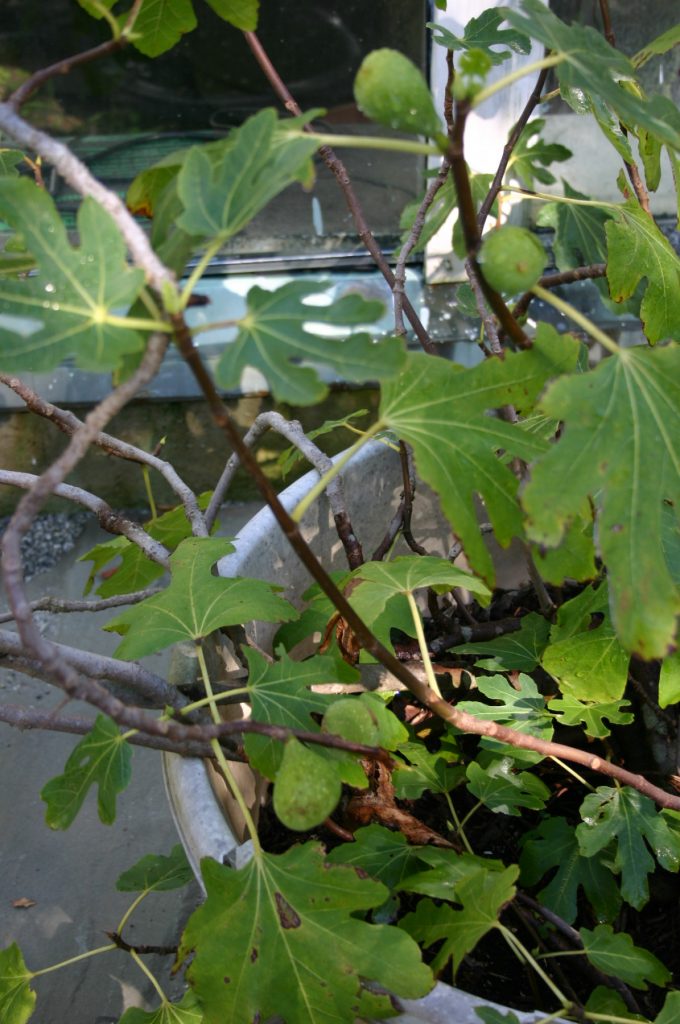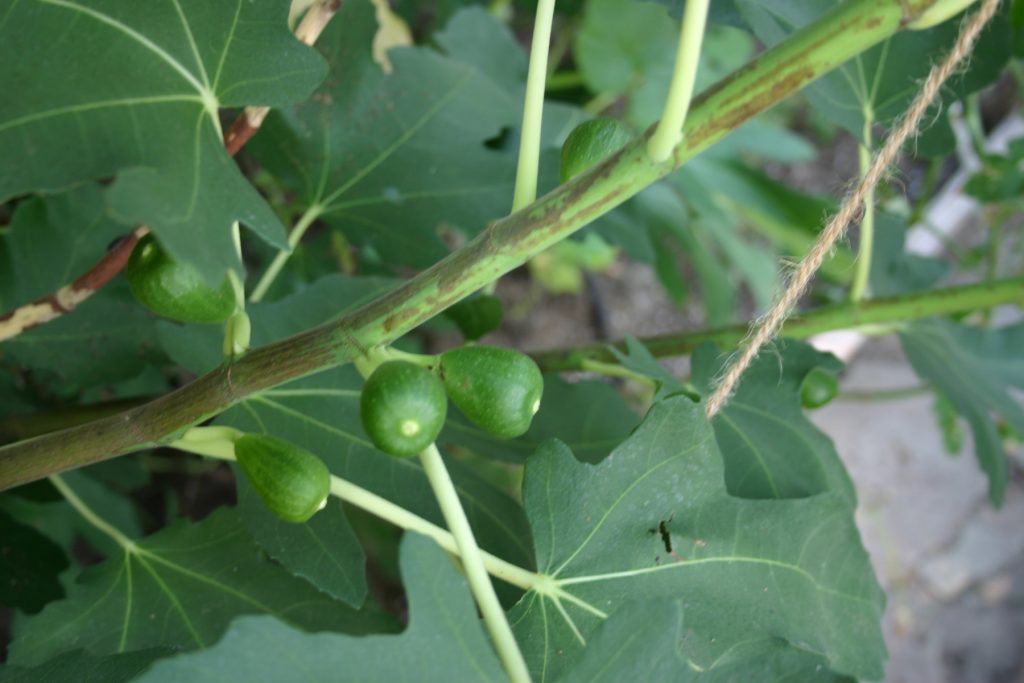
Fig trees typically grow in warm climates, so there are many regions too cold for them to survive the winter. In general, hardiness zones lower than 6 are not fig-friendly. One old-style method of protecting a fig tree during winter in cold climates is to tie up the branches after they’ve shed their leaves and bury the tree in an adjacent trench. By carefully cutting the roots on one side, the tree can be lowered into the trench, covered with burlap or some other breathable material, buried with soil, and topped with a thick layer of mulch. In spring, the tree is then retrieved and left to grow until winter comes knocking again.
Fortunately, greenhouse owners don’t need to suffer such a bothersome chore as burying a fig tree. If you own a greenhouse, no matter how large or small, you can grow your own figs. As long as you keep your greenhouse temperature above about 28oF (about -2oC), your fig tree should survive the winter just fine. It is the harsh freeze/thaw cycle that you need to avoid. Yes, the tree will drop its leaves in fall, leaving bare branches, but in spring it will leaf out again and set delicious fruit.

Knowing the conditions that fig trees prefer is key to success in growing them. These trees need full sun and a soil pH between 6 and 6.5, which is close to neutral. In more acidic soils, they grow poorly. Figs also need a sizable amount of water to grow well, ideally between one and two inches of water each week. If you are leaving potted fig trees outdoors in summer, you will need to water them during dry spells in order for them to produce well. Fertilize your fig trees with a balanced fertilizer (10-10-10 or 6-6-6) when the fruit is developing. Fig trees will typically grow about 12” to 18” per year. Those cultivated in pots will have more restricted growth overall.
It doesn’t take long to learn the fruiting cycle of fig trees. These plants leaf out in spring and set tiny, almost invisible flowers. The fruit is produced at leaf nodes where it starts out very small, just pea-sized. By fall, however, with enough water, the figs grow quite large and are harvestable usually from late August onwards. You can tell when a fig is ready to be picked by inspecting the tiny eye at the bottom. When it begins to open, the fig is ripe. If you leave it too long before picking, insects often get into the fruit through this opening and nibble on the interior.
Fig trees may also produce something known as the Breba crop. These are tiny figs that grow on the old wood after the main crop is harvested. These little figs will often ripen the following spring if the fig tree is kept reasonably warm over the winter. However, the Breba crop is usually not as tasty or sweet as the main crop is. On some varieties, and in areas where there is not enough sunshine or water to ripen the main crop, the Breba crop may be the only crop that ripens. Because the Breba crop can consume nutrients from the plant, it can decrease the abundance and quality of the main crop.

If you want to grow figs, you’ll need to decide what type of fig to grow. There are hundreds of varieties on the market. The following five are ones that I have grown in my greenhouse.
- Brown Turkey is probably the most common fig tree available, and it’s very easy to propagate. It has large leaves and dark brownish- green to coppery-colored fruit that is three to four inches long. The figs are very sweet and also plentiful if the plant gets enough water.
- Another tasty fig is White Marseille, said to have been introduced to America by Thomas Jefferson at his Monticello home in Virginia. The fruit can be green to yellow with whitish flesh. Not very tolerant to cold, it should be grown in a greenhouse below zone 7.
- Black Mission is a variety with very dark, sweet fruit. It is best grown in hot, sunny greenhouses, although it can be cultivated outdoors above zone 7.
- Peter’s Honey is a greenish, quite tasty fig, but it can be a little finicky to grow outside a greenhouse. Inside my greenhouse, this tree grew through the bottom of the barrel and became huge. In fact, it got so large that it threatened to lift the glass off the greenhouse roof. It produced a bountiful crop of figs, however.
- Chicago Hardy, as its name implies, will do reasonably well when grown outdoors and can tolerate winter down to zone 5. Like most other fig trees, it requires full sun for at least five hours each day. The figs are quite good, but the crop can vary in size depending on winter weather.


